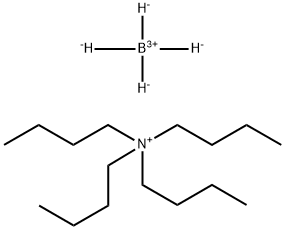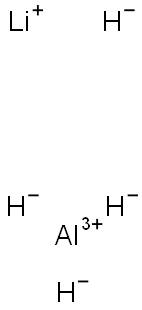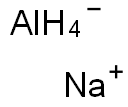Diisobutylaluminium hydride
Synonym(s):DIBAL;DIBAL-H
- CAS NO.:1191-15-7
- Empirical Formula: C8H19Al
- Molecular Weight: 142.22
- MDL number: MFCD00008928
- EINECS: 214-729-9
- SAFETY DATA SHEET (SDS)
- Update Date: 2025-09-25 17:15:13

What is Diisobutylaluminium hydride?
Description
Diisobutylaluminium hydride (DIBALH, DIBAL, DIBAL-H or DIBAH) is a reducing agent with the formula (i-Bu2AlH)2, where i-Bu represents isobutyl (-CH2CH(CH3)2). It can be used for various homogeneous reductions such as alkynes to alkenes, esters or nitriles to aldehydes. It is available commercially as the neat reagent and as a solution in several different solvents (hexane, dichloromethane, tetrahydrofuran, etc.). The neat reagent is a liquid and is supplied in metal cylinders. It is pyrophoric and highly reactive and therefore must be handled with great care. The molar solutions in organic solvents are more stable and easier to handle provided that the normal precautions are taken for working with air-sensitive compounds. They must all be handled in an atmosphere free from oxygen and water. Commonly used solvents for diisobutylaluminium hydride are dichloromethane, diglyme, dioxane and tetrahydrofuran. Even when the substrate is not completely soluble in these solvents successful reductions can be accomplished.
Description
Diisobutylaluminum hydride (DIBAL-H) is an organoaluminum reagent typically used for the reduction esters or nitriles to aldehydes. DIBAL-H is usually obtained and used as a 1.0 M solution in a wide variety of solvents (ex. DCM, THF, hexanes, heptane, toluene, and cyclohexane). Some of the advantages of using DIBAL-H over other organoaluminum reagents include its greater selectivity, its ease of handing as a liquid, and its miscibility with a wide range of solvents (including hydrocarbons and aromatic solvents).
Chemical properties
Diisobutylaluminium hydride, also known as Dibal. colorless liquid. Viscosity 18.0mPa-s(25℃). Reacts violently with water to form hydrogen and isobutane. Tetrahydrofuran is not suitable as Dibal solvent, because the two react to produce coordination compounds. Diisobutylaluminium hydride is a useful reducing agent in organic synthesis. It can reduce ketones, carboxylic acids and esters to the corresponding alcohols. Dibal can also reduce lactones to o-hydroxy lactones.
The Uses of Diisobutylaluminium hydride
Diisobutylaluminum hydride is commonly used as a reducing agent in organic synthesis.
Diisobutylaluminum hydride can be used in the following protocols:
As a promotor of Tishchenko reaction of aldehydes.
Conversion of benzylidene acetals of 1,2-and 1,3-glycols to the corresponding monobenzyl ethers of the glycols.
To generate a novel chiral reducing agent based on (S)-proline for the asymmetric reduction of prochiral ketones.
The Uses of Diisobutylaluminium hydride

To a solution of the SM (45.5 g, 131 mmol) in THF (350 mL) at -78 C was added DIBAL-H (1.5M in toluene, 50 g, 350 mmol) dropwise over 75 min maintaining the internal temp between -65 C and -60 C. After completion of the addition, the reaction mixture was warmed to -10 C for 90 min. A 4M aq KOH solution (350 mL, 10.7 eq) was carefully added dropwise, maintaining the temp at -10 C. The mixture was allowed to slowly warm to RT with vigorous stirring, and then was stirred at RT for 20 h. MTBE (200 mL) and heptane (400 mL) were added. The org phase was separated and washed with 1M aq KHSO4, brine, and dried over a mixture of MgSO4 and 30 g silica gel. The solids were removed by filtration and the filtrate was concentrated in vacuo. Upon concentration a precipitate began to form. The resulting wet residue was triturated with 10% MTBE/heptane (500 mL) at 60 C for 1 h. The resulting suspension was slowly cooled to RT under stirring. The resulting solids were filtered and dried in a vac oven at 40 C to provide the product. [31.2 g, 78%]
The Uses of Diisobutylaluminium hydride
Diisobutylaluminum hydride is used as reducing agent in pharmaceuticals. It is also used as raw material in organic synthesis, agrochemicals and dyestuffs.
The Uses of Diisobutylaluminium hydride
Diisobutylaluminum hydride (DIBAL-H) is a common reducing agent to reduce aldehydes, ketones, esters, acids and acid chlorides to the corresponding alcohols. Some of the applications are:
Synthesis of α-acetoxy ethers by reduction and subsequent acetylation of esters.
Synthesis of coniferyl, sinapyl, and p-coumaryl alcohol by selective reduction of corresponding cinnamate esters.
Reduction of secondary phosphine oxides (SPOs) to the corresponding phosphines.
DIBAL-H can also be used in the hydroalumination of alkene and alkynes.
Flammability and Explosibility
Spontaneously flammable in air (pyrophoric)
Safety Profile
Mddly toxic by inhalation. Dangerous fire hazard; iptes spontaneously in air. To fight fire, do not use water, foam, or halogenated extinguisking agents. See also HYDRIDES and ALUMINUM COMPOUNDS.
Properties of Diisobutylaluminium hydride
| Melting point: | -70 °C |
| Boiling point: | 65 °C |
| Density | 1.23 g/mL at 25 °C |
| vapor pressure | 13.3Pa at 90℃ |
| Flash point: | 40 °F |
| storage temp. | 2-8°C |
| solubility | Miscible with organic solvents. |
| form | Solution |
| appearance | Colorless liquid |
| Specific Gravity | 0.860 |
| color | Clear |
| Water Solubility | vigorous reaction |
| Hydrolytic Sensitivity | 8: reacts rapidly with moisture, water, protic solvents |
| Sensitive | Air Sensitive/Heat Sensitive |
| BRN | 4123663 |
| Exposure limits | ACGIH: TWA 20 ppm OSHA: Ceiling 300 ppm; TWA 200 ppm NIOSH: IDLH 500 ppm; TWA 100 ppm(375 mg/m3); STEL 150 ppm(560 mg/m3) |
| CAS DataBase Reference | 1191-15-7(CAS DataBase Reference) |
| NIST Chemistry Reference | Diisobutylaluminum hydride(1191-15-7) |
| EPA Substance Registry System | Diisobutylaluminum hydride (1191-15-7) |
Safety information for Diisobutylaluminium hydride
| Signal word | Danger |
| Pictogram(s) |
 Flame Flammables GHS02  Corrosion Corrosives GHS05  Exclamation Mark Irritant GHS07  Health Hazard GHS08 |
| GHS Hazard Statements |
H225:Flammable liquids H250:Pyrophoric liquids; Pyrorophoric solids H260:Substances And Mixtures Which, In Contact With Water,Emit Flammable Gases H304:Aspiration hazard H314:Skin corrosion/irritation H336:Specific target organ toxicity,single exposure; Narcotic effects H373:Specific target organ toxicity, repeated exposure H412:Hazardous to the aquatic environment, long-term hazard |
| Precautionary Statement Codes |
P210:Keep away from heat/sparks/open flames/hot surfaces. — No smoking. P280:Wear protective gloves/protective clothing/eye protection/face protection. P231+P232:Handle under inert gas. Protect from moisture. P301+P330+P331:IF SWALLOWED: Rinse mouth. Do NOT induce vomiting. P303+P361+P353:IF ON SKIN (or hair): Remove/Take off Immediately all contaminated clothing. Rinse SKIN with water/shower. P370+P378:In case of fire: Use … for extinction. |
Computed Descriptors for Diisobutylaluminium hydride
| InChIKey | AZWXAPCAJCYGIA-UHFFFAOYSA-N |
Diisobutylaluminium hydride manufacturer
JSK Chemicals
Sainor Laboratories Pvt Ltd Unit III
ASM Organics
New Products
4,4-Difluoropiperidine hydrochloride tert-butyl 9-methoxy-3-azaspiro[5.5]undecane-3-carboxylate Indole Methyl Resin N-Isopropylurea N,N-Dicyclohexylcarbodiimide(DCC) MELDRUMS ACID 5-METHYLISOXAZOLE-4-CARBOXYLIC ACID Magnessium Bis glycinate Zinc ascorbate 1-bromo-2-butyne 2-acetamidophenol 9(10H)-anthracenone Erythrosin B, 4-Piperidinopiperidine 2-((4-morpholinophenylamino) (methylthio) methylene) malononitrile 2,4-dihydroxybenzaldehyde 3-(4-morpholinophenylamino)-5-amino-1H-pyrazole-4-carbonitrile Methyl 2-methylquinoline-6-carboxylate 2,6-dichloro-4-nitropyridine 4-Bromo-2-chlorobenzonitrile 2-(benzylamino)acetic acid hydrochloride 4-(tert-Butoxycarbonylamino)but- 2-ynoic acid 3,4-dihydro-2H-benzo[b][1,4]dioxepine 1-Phenyl-1-cycloprppanecarboxylicacidRelated products of tetrahydrofuran








You may like
-
 Diisobutyl Aluminium Hydride 98%View Details
Diisobutyl Aluminium Hydride 98%View Details -
 Diisobutylaluminum hydride CAS 1191-15-7View Details
Diisobutylaluminum hydride CAS 1191-15-7View Details
1191-15-7 -
 Diisobutylaluminium hydride (1M soln. in hexane) CAS 1191-15-7View Details
Diisobutylaluminium hydride (1M soln. in hexane) CAS 1191-15-7View Details
1191-15-7 -
 Diisobutylaluminium hydride solution CAS 1191-15-7View Details
Diisobutylaluminium hydride solution CAS 1191-15-7View Details
1191-15-7 -
 Diisobutylaluminum hydride,1M in Toluene CAS 1191-15-7View Details
Diisobutylaluminum hydride,1M in Toluene CAS 1191-15-7View Details
1191-15-7 -
 Diisobutylaluminum hydride CAS 1191-15-7View Details
Diisobutylaluminum hydride CAS 1191-15-7View Details
1191-15-7 -
 Diisobutylaluminum hydride solution CAS 1191-15-7View Details
Diisobutylaluminum hydride solution CAS 1191-15-7View Details
1191-15-7 -
 Diisobutylaluminum hydride solution CAS 1191-15-7View Details
Diisobutylaluminum hydride solution CAS 1191-15-7View Details
1191-15-7
